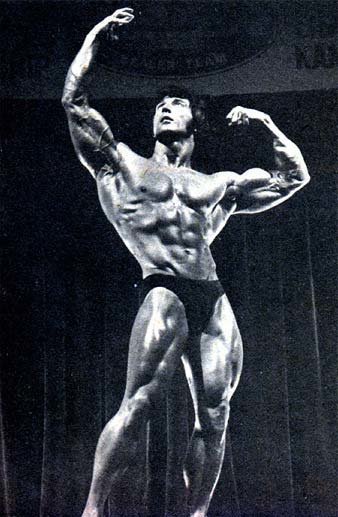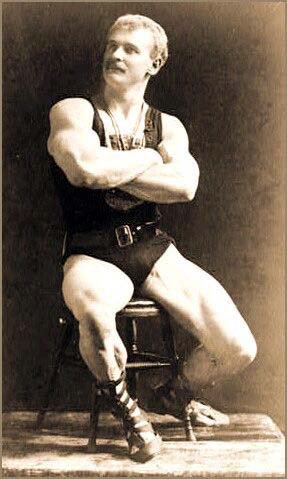Know Your Measurements For Bodybuilding Success
David Robson
March 18, 2015
Discover ways to assess your genetic potential and plan for future development through measurement of individual body parts. Here are a few tools to help you do it.
In bodybuilding, physiques that are classed as visually stunning are generally those regarded as being symmetrical and proportional - a state where there is an obvious balance between both sides of the body, where nothing looks out of place and everything seems to flow and taper into a harmonious whole (often referred to as the total package).
While today's emphasis - at least in the pro division - is on mass and conditioning, many would like to see a re-emergence of the type of physique often witnessed onstage in the late 70s through to the late 80s - a time when competitors were coming in bigger while retaining the symmetrical and aesthetically pleasing shape that had exemplified pro bodybuilding up until that point.

Frank Zane
Bodybuilders such as Frank Zane, Chris Dickerson,Bob Paris, Lee Labrada, and Lee Haney are examples of men who managed to combine beautiful aesthetics with adequate size to compete, and dominate at the highest level.
Today, although similarly-built competitors are often relegated to the minor placings, the look they project is considered by the general bodybuilding population to be more worthy of emulation than the overt emphasis on mass witnessed increasingly more often.
What can be done to achieve the kind of classic physique that looks great whether onstage or in public? How can one attain flowing muscle groups that are in perfect proportion? The first step is to determine exactly where they are at before planning for success accordingly.
One obvious barrier to success is genetics. If one naturally has a very wide waist and hips, with tiny calves and narrow shoulders, although positive changes can be made, they will not be dramatic enough to produce what could be deemed a symmetrical and balanced physique.
Fortunately the majority of us do not fall into this category and will make great progress in the aesthetics department with sufficient attention to detail. First, however, we need to determine exactly what comprises nice aesthetics. The purpose of this article is to explain how we can assess our genetic potential and plan for future development through the measurement of individual body parts.
Proportion & Symmetry:
How Do We Determine Our Proportion & Symmetry?
The best method, by far, to accurate determine where our individual body parts fall in terms of over symmetry and proportion is the tape measure.
Measuring the circumference of each body part will give an idea of where improvements need to be made, provided one is in reasonable shape and the individual muscles are able to be discerned - an excessive amount of fat will give a false indication of overall muscularity if taken into account when the measurements are taken.
Measurement Tips ///
- Refrain From Exercise Before Measuring:
Refrain from exercise before measuring body parts. Exercise will cause blood to rush to certain muscle groups thus distorting the overall result. For example, training legs will give the impression these are larger than they naturally are. The idea behind body part measurement is to ensure that all groups are assessed in their natural state, to get an accurate result. - Measure In A Relaxed State:
Measure body parts in their relaxed state. Ensure that muscles are not flexed, particularly the biceps - bodybuilders have a natural tendency to do this - as this will produce an inconsistent result given there is usually a wide variation between individual, flexed body parts. For example, a flexed biceps will increase in size more than a flexed calf. - Do Not Pull The Tape:
Do not pull the tape to meet at the opposing end as this will stretch the tape, giving a larger reading than would otherwise be recorded. - Keep A Diary:
Keep a diary to record measurements and note them accurately. To ensure the correct goals are plotted, the exact measurement must be recorded. Adding a quarter inch - accidentally or otherwise - will obviously give the wrong indication and the ideal proportion will be harder to obtain. - Follow Instruction:
With devices such as the Myotape, as opposed to a regular measuring tape, ensure all instructions are followed. Often there is a two-inch gap, which encircles the body part that needs to be considered when determining the measurement. - Measure Both Sides:
Measure both right and left sides of the body. To accurate assess symmetry; meaning the balance between body parts, both sides of the body need to be measured. If one muscle group is out by however much, it will need to be prioritized.
Body Parts To Be Measured ///
- Upper Arm (right and left)
- Forearm (right and left)
- Chest
- Thigh (right and left)
- Calf (right and left)
- Waist
- Shoulder
Once our measurements are determined, how do we know what to aim for? Are we in proportion? What areas need improvement? There are two prevailing theories on how the perfectly proportioned physique should be structured.
The Grecian Ideal

Eugene Sandow
The ancient Greeks had a definite ideal regarding how the male physique should look. In the 19th century, newly excavated Greek and Roman statues highlighted similar physical characteristics such as a small, muscular waist, wide shoulders and detailed, but not overwhelmingly huge, muscles.
The great Eugene Sandow (the man the Mr. Olympia statuette is based on and the first man many regard to have achieved true muscularity) achieved close to this ideal around this time, and was widely revered for fitting what Victorian society, at that period, considered being the perfectly proportioned physique.
Through much analysis and determining of what constituted ideal physical measurements - the basis of any balanced physique - a "Grecian Ideal" calculator was formulated for self-assessment based on wrist size, to determine the individual body part circumference goals one should aspire to in order to develop the perfect physique.
| Male "Grecian Ideal" Calculator |
The Steve Reeves Ideal Body Measurement
The physique of 1940s-1950s bodybuilding legend Steve Reeves will go down in history as being one of the most perfectly proportioned of all time. Many feel his body represents what a bodybuilding physique should look like - flawless and beautiful. His measurements (18.5-inch arms, calves and neck) were regarded as a benchmark for symmetry and proportion, and his philosophy was to keep the body balanced through the adherence to a couple of methods.
1. Height To Weight Chart For Building A Classic Physique ///
Reeves believed ones height represented the limit to which they could pack on mass. His main philosophy proposed keeping muscular bodyweight within acceptable limits to prevent the distortion of ones natural symmetry.
| Height | Weight |
| 5'5" | 160lbs |
| 5'6" | 165lbs |
| 5'7" | 170lbs |
| 5'8" | 175lbs |
| 5'9" | 180lbs |
| 5'10" | 185lbs |
| 5'11" | 190lbs |
| 6'0" | 200lbs |
| 6'1" | 210lbs |
| 6'2" | 220lbs |
| 6'3" | 230lbs |
| 6'4" | 240lbs |
| 6'5" | 250lbs |
2. Muscle To Bone Ratios For Building The Classic Physique ///
To create the kind of ultra-symmetrical physique displayed by Reeves - where the all-important bone-to-muscle ratio conveys an illusion of greater size, while not detracting from overall aesthetics - use the following table, one that he himself endorsed.
| Steve Reeves Ultra-Symmetrical Physique Ratios | ||
| Arm size | = 252% of | Wrist size |
| Calf size | = 192% of | Ankle size |
| Neck Size | = 79% of | Head size |
| Chest Size | = 148% of | Pelvis size |
| Waist size | = 86% of | Pelvis size |
| Thigh size | = 175% of | Knee size |
| Reeves Calculator | ||||||||||||||||||||||||||||||
|
For example: to determine your arm size, measure your wrist. Then multiply this measurement by 2.52 to get your proposed arm size.
As well as insisting on having an equal biceps, neck and calf measurement, Reeves also felt that the thigh measurement should be exactly half that of the chest circumference, and the waist should be twice that of the neck.
For the record, Steve Reeves measurement were:
- Arms: 18.5
- Calves: 18.5
- Neck: 18.5
- Thighs: 27
- Chest: 54
- Waist: 30
Aside from his waist measuring six inches less than twice the circumference of his neck, he almost reached his own ideal of the perfect physique.
Conclusion
Although symmetry and proportion are largely determined by genetics, most of us can, through proper planning and attention to detail, make great progress as far as overall body shape is concerned. Measuring body parts to determine your existing body shape and using the approaches outlined in this article will have you turning heads in no time.
ABOUT THE AUTHOR
David Robson
As an active martial artist, bodybuilder and accredited personal trainer, David employs the latest cutting edge research to enhance his own progress.
RATE THIS ARTICLE
8.5
Out of 10
Excellent
39 Ratings
- Get link
- X
- Other Apps
- Get link
- X
- Other Apps
